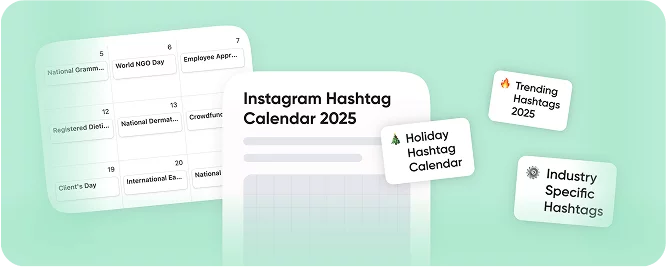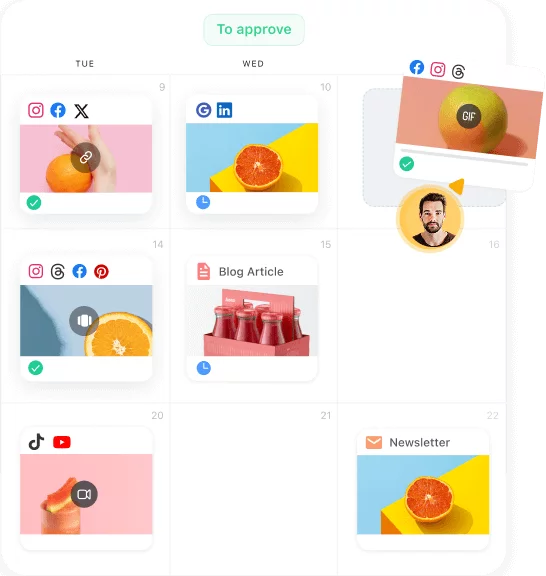Haven’t you heard the latest rumor yet? Nearly all social media marketers chatter these days that commenting will outshine posting as a growth strategy. But actually, this is not someone’s fantasy or baseless gossip spread across the digital space. As we approach a...
Is Looking at Benchmarks Useful or Deceiving?

This session was part one of our “Decoding social media analytic masterclass”: a 5-part series where we cleared the fog away from social media analytics.
In this 1-hour session, together with Grégory Piet, Head of Research at Audiense, we delve into social media benchmarks and how to use them to provide context to raw data.

Get the webinar recording
Meet the speakers:
With a Ph.D. in Political Science and 7 years of research experience at Liege University in Belgium, Grégory has developed a deep understanding of decision-making processes. In 2016, he founded a consultancy that has since partnered with leading brands and industries, delivering strategic expertise in brand positioning, competitive analysis, and audience intelligence. His work spans various sectors, including luxury brands, retail, automotive, healthcare, and political organizations.
In 2021, Grégory joined SOPRISM and now leads Consulting & Research at Audiense, driving innovative, strategic solutions post-acquisition.
Interviewer: Noa Lupu
Noa is an experienced Account and Project Manager turned Customer Success Lead at Planable, where she combines her background in social media management with firsthand knowledge as a former Planable customer. Now leading the Customer Success team, Noa focuses on ensuring client satisfaction, building strong relationships, and enhancing customer support processes to deliver an outstanding experience.
Key Insights from this session:
1. Use benchmarks to measure success, not just to set goals
One of the most critical aspects of benchmarking is understanding that it isn’t just about setting targets—it’s about continually measuring your success against these targets. As Gregory emphasized, benchmarks can give you the “big picture,” showing how well your social media efforts align with both industry standards and your closest competitors.
A solid benchmarking framework includes three key types:
- Industry benchmarks for broader standards.
- Competitive benchmarks to see how your brand stacks up against similar ones.
- Personal or brand benchmarks to monitor your unique growth and internal performance.
For example, if you’re focusing on engagement rate, you’ll want to look at how competitors perform in your niche. Do your engagement benchmarks reflect significant gaps? Adjustments here can show areas for improvement.
2. Connect Social Media benchmarks to audience relevance
Our guest expert Gregory discussed using benchmarks as a tool to ensure you’re reaching the right audience. Misalignment between your social media content and your audience’s expectations can lead to stagnant growth or low engagement. For advanced marketers, this can mean employing specialized tools to analyze overlap with competitors and measure how well your brand aligns with audience psychographics or lifestyle choices.
For instance, if a competitor brand is excelling with specific demographics or content types that resonate within your industry, benchmarking your performance against theirs can help you identify the gaps and adjust your strategy accordingly.
3. Prioritize metrics based on campaign phases and goals
Another key insight is that not all metrics are equally important across campaigns. For example, if your goal is to boost attendance at an event four months from now, you should focus on reach and awareness metrics several months out, followed by engagement closer to the event date. This phased approach helps marketers create data-backed, timeline-specific objectives rather than juggling a laundry list of metrics.
As shared during the session, this targeted approach allows you to analyze only the most relevant metrics, leading to clearer reporting and a sharper focus on measurable goals.
4. Define clear actions from benchmark results
When using benchmarks, it’s easy to note where you fall short or where competitors excel, but the value lies in turning these insights into actionable strategies. For example, if your brand’s engagement metrics are falling behind, analyze what content is driving competitor engagement. Are they using interactive formats like polls or incorporating humor in a way your brand isn’t? Based on these findings, you can adapt by experimenting with new formats or modifying your content calendar.
5. Tweak and adapt constantly
Social media is dynamic, and benchmarks should be too. A crucial takeaway from our session is the importance of using benchmarking as a fluid process, not a static one. Changing algorithms, new platforms, and evolving audience preferences all impact social media benchmarks, making flexibility essential. Set regular intervals—monthly or quarterly—to reassess your benchmarks and adapt as needed.
Benchmarking is both an art and a science, offering a competitive edge and clarity for brands who use it well. If you’re interested in learning more, including seeing these strategies in action, sign up below to receive the recording of our full session and elevate your social media strategy today.





